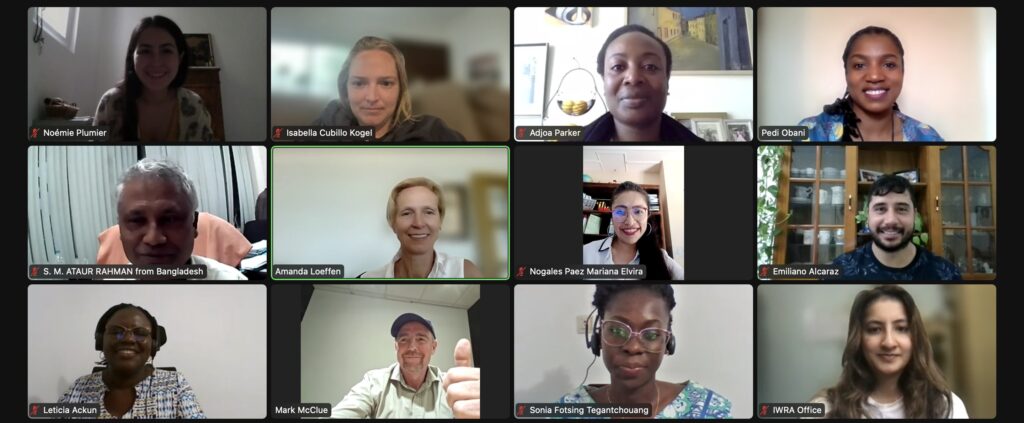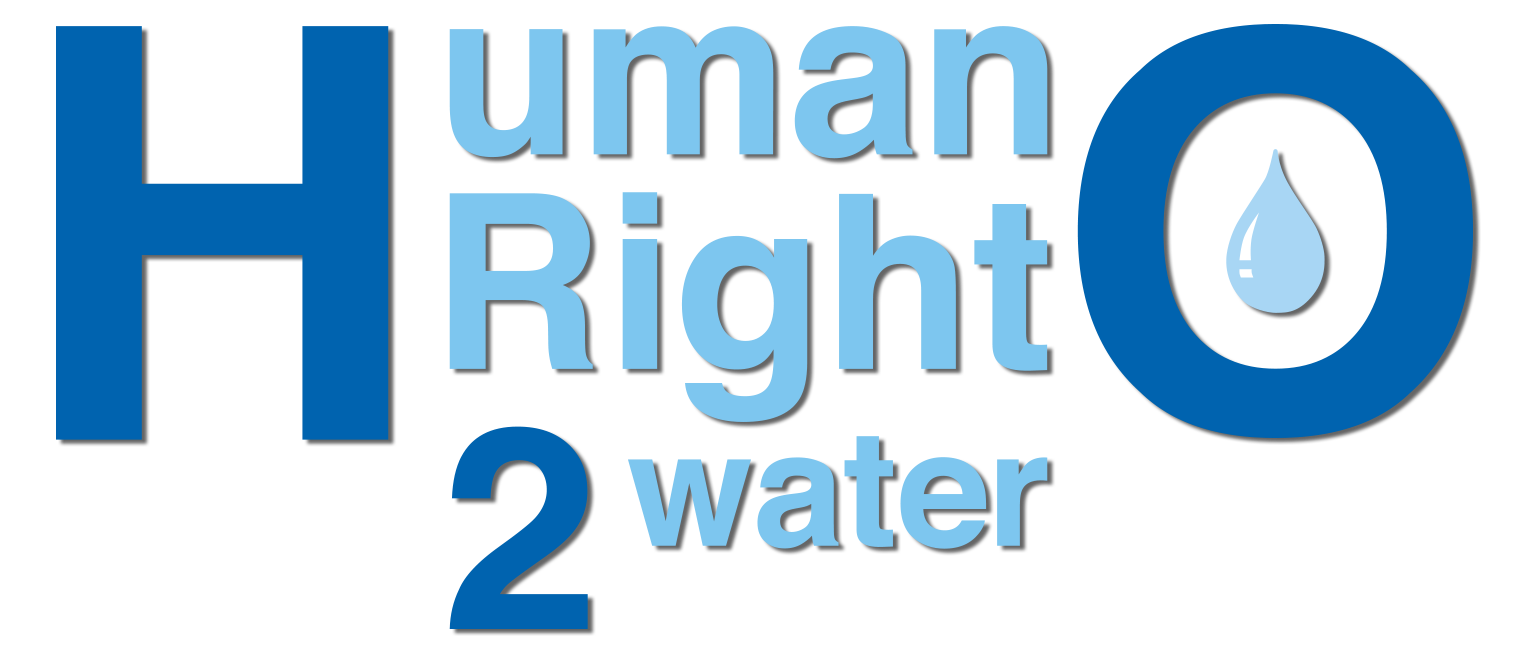
Module 5 of the Masterclass for Institutional Responsibility was held on Wednesday May 31st. The module was hosted by Dr. Pedi Obani who is the Associate Professor at the University of Bradford and our Expert Committee vice-chair. The lecture and the workshop focused on human rights indicators and how these can be used as a practical tool for monitoring and then realising SDG 6.
If you wish to take part in interactive workshops like this masterclass in future you can learn about how to become a member here.
Human Rights Indicators- What are they?
We need to measure the normative content and principles as the key elements of the human rights to water and sanitation. This means that access to water and sanitation need to be sufficient, safe, acceptable, physically accessible, and affordable. The principles are a transversal element that can apply to any right. The SDGs include national targets but they are not disaggregated at local levels, and they are not able to capture all the human right elements.
Examples of cross-cutting themes are:
- Non-discrimination
- Access to information and transparency
- Public participation
- Accountability
- Sustainability
- Empowerment
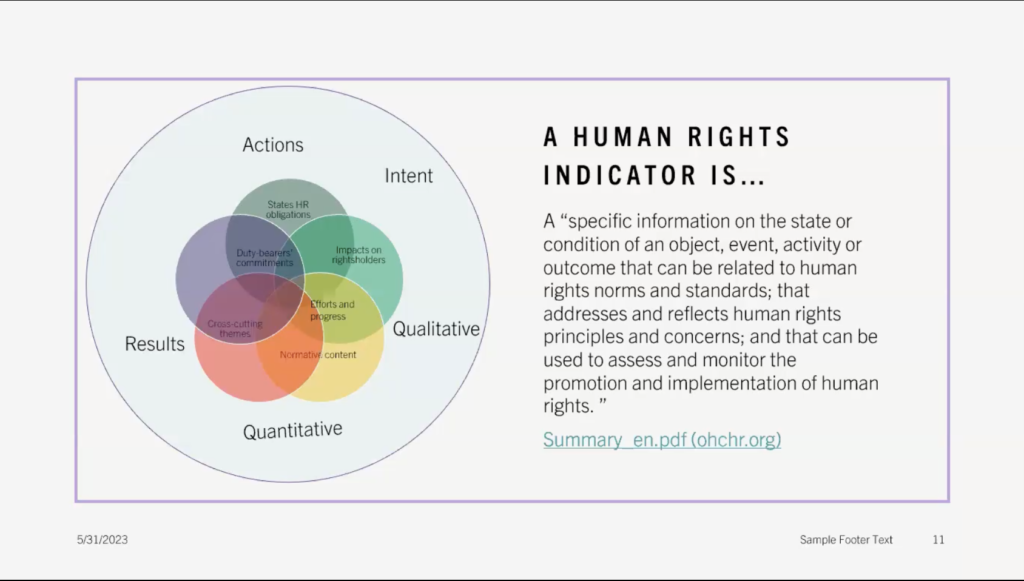
Fig. 2 Slide showing definition of a human rights indicator
Human Rights indicators can be qualitative or quantitative. They measure not only the outcomes and progress, but also the intent, actions, commitments and impact, to incorporate the criteria and principles of the HRWS. The table in Fig. 3 shows the different types of indicators.
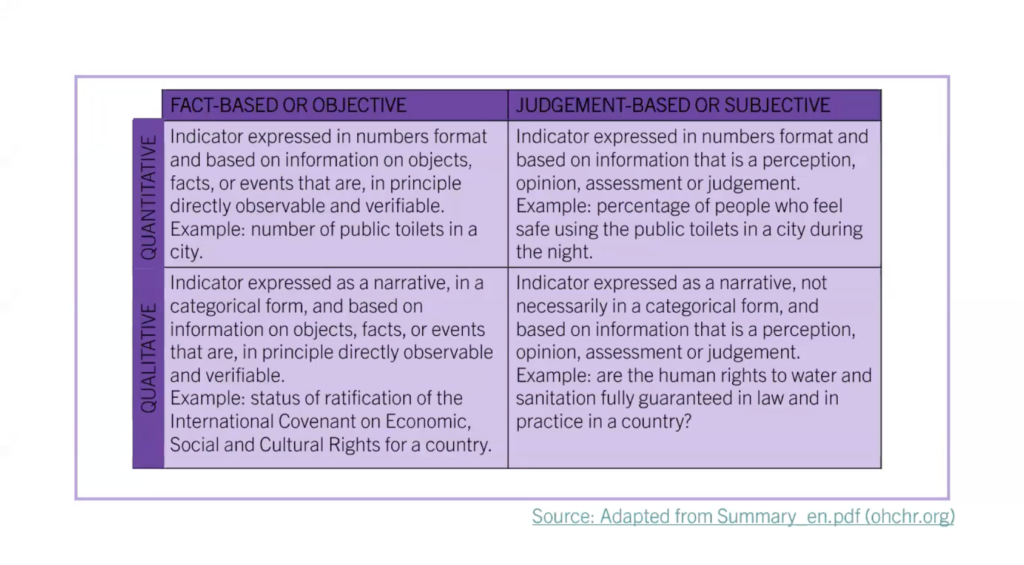
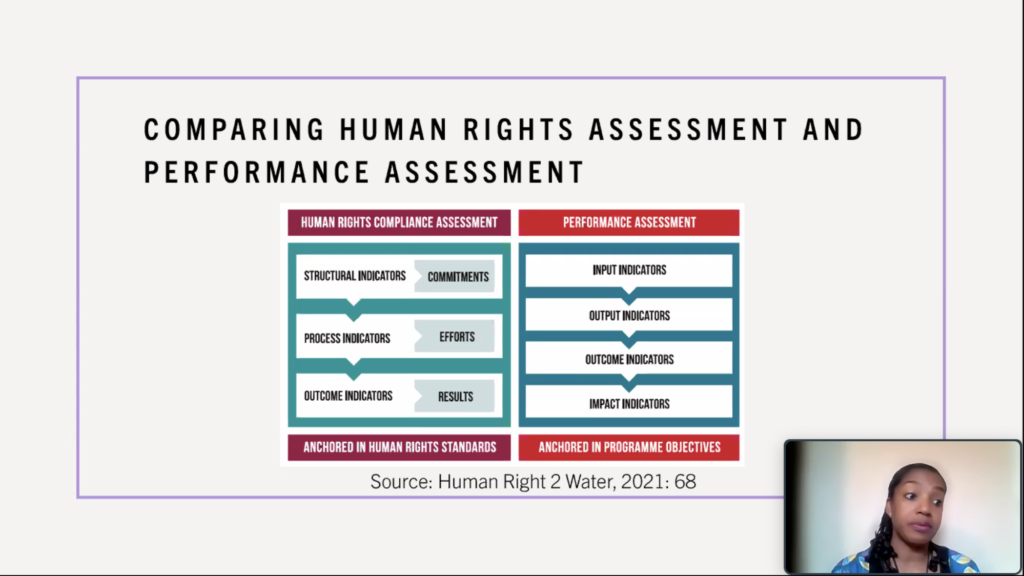
Projects normally measure performance indicators related to the programme objectives. HRBA indicators, are broader in scope and are dividied into structural indicators (commitments), process indicators (efforts), and outcome indicators (results) and they are anchored in human rights standards (Fig. 4).
“Human rights indicators are subject to progressive realisation, we may not be able to achieve them at once, but we need to make sure that our efforts towards realisation progressively get better”, Pedi Obani
When choosing indicators it is important for them to be simple and specific, relevant and reliable, and allow independent data collection methods from the subjects that are being monitored. They also should be global and universally meaningful, while adapted to the context in which they are used. Disaggregation is important and should be based on non-discrimination. Lastly, they should be human rights standard-centric, transparent, timely, and time-bound.
Dr. Obani summarised the steps for the monitoring and evaluation of this approach:
- Conduct a legal mapping of state commitments
- Establish a baseline for planning
- Measure progress using disaggregated data
- Validate and gain stakeholder approval
All of this was further discussed and applied during the breakout groups, allowing participants to apply what they had learned in all five modules of the masterclass.
